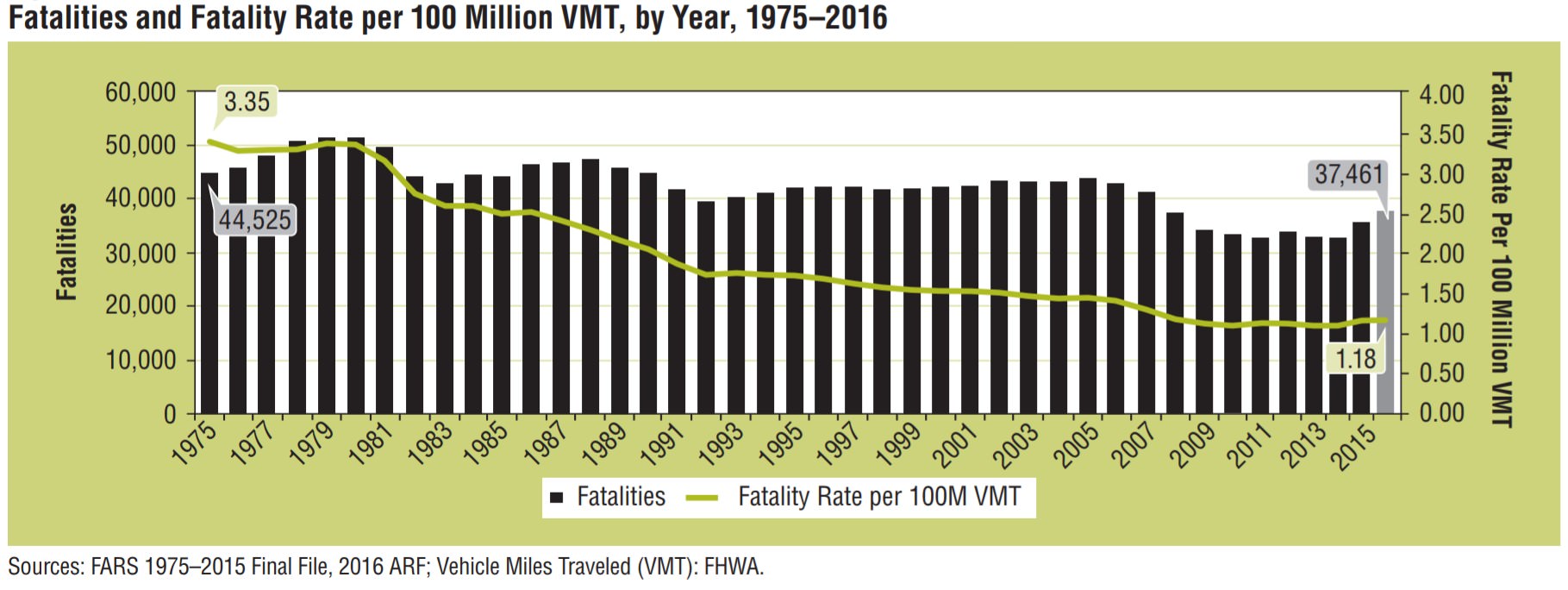The National Highway Traffic Safety Administration has released fatality statistics for 2016. As many had feared, not only did the total number of deaths increase last year, but so did the fatality rate (i.e. the number of deaths per 100 million vehicle miles traveled).
That’s even more troubling than it might’ve been because there was a massive uptick in fatalities in 2015. Some had hoped that the spike was an aberration and that in 2016, we’d see numbers decline or at least level off. But no, things are continuing to get worse.
How much worse?
In 2015, there were a total of 35,485 deaths on U.S. roads. Last year, there were 37,461–a 5.6 % jump.
In 2015, 1.15 people died for every 100 million miles Americans traveled. In 2016, the fatality rate edged up by 2.6% to 1.18 deaths.
As usual, NHTSA is better at reporting the data than explaining it. However, when you look at the categories of fatalities, you can begin to pick out some trends. From the agency’s press release (we’ve highlighted the increases)
- Distraction-related deaths (3,450 fatalities) decreased by 2.2 percent;
- Drowsy-driving deaths (803 fatalities) decreased by 3.5 percent;
- Drunk-driving deaths (10,497 fatalities) increased by 1.7 percent;
- Speeding-related deaths (10,111 fatalities) increased by 4.0 percent;
- Unbelted deaths (10,428 fatalities) increased by 4.6 percent;
- Motorcyclist deaths (5,286 fatalities – the largest number of motorcyclist fatalities since 2008) increased by 5.1 percent;
- Pedestrian deaths (5,987 fatalities – the highest number since 1990) increased by 9.0 percent; and
- Bicyclist deaths (840 fatalities – the highest number since 1991) increased by 1.3 percent.
Click here to download a more detailed overview of the data. Or, if you’re in a real hurry, click here for a PDF of the most important numbers.

Comments are closed.